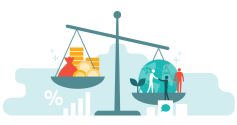225
504
Last entries
As one of the world's most spoken languages, and especially as the language of global trade and business, English has become a source of debate in many non-English-speaking countries over its impact on their own languages. Here's how France and Quebec each approach the issue of anglicisms in their culture, from safeguarding their culture to adopting a pragmatic stance. Analyses and examples. [TOC...
In a globalized world where multilingual communication is crucial, ChatGPT has emerged as a powerful tool for quick and cost-effective translations. While its capabilities are impressive, especially when using the latest models, out-of-the-box translations may not always meet professional standards , particularly when it comes to nuanced content, technical terms or maintaining consistency. The...
Have you ever been surprised that translating the same text into different languages can result in very different prices? Why is a translation from English to Japanese more expensive than from English to Spanish? While it may seem illogical at first glance, the answer lies in the underlying economics and structure of the translation industry. In this article, we’ll explore the key factors that...
[TOC] Inclusive language not only respects diversity, it also shapes people's perception of the world. By avoiding stereotypes, it offers fairer and more respectful communication, which is essential in this era of multiculturalism and global marketing. The theory of linguistic relativity proposes that the language and words we use influence our behaviour and thoughts. For example, the third-...
[TOC] With over 25 million speakers in Romania, Moldova and in the diaspora, Romanian has been one of the official languages of the European Union since 2007. For companies wishing to target the Romanian-speaking markets, translating into this language is not just a linguistic need, it is a strategic approach that improves credibility, demonstrates cultural proximity,and opens doors to potential...
Bad translations don't only sound awkward, they can also damage your brand, confuse your customers and cost you real money. But here’s the good news: better results don’t always mean bigger budgets. Often, what companies need is a smarter approach to how they collaborate with translation providers. Whether you’re working with a freelance translator, a translation agency , or even handling...
The Czech Republic is much more than a tourist crossroads of Central Europe. The country has a dynamic market, driven by diverse sectors such as the automotive, information technology and pharmaceutical industries. However, to effectively address this market, it is not enough to translate your content word for word. Translating content into Czech , a rigorous and nuanced activity, is a strategic...
Translating a document into Portuguese may seem simple for anyone who speaks the language. However, linguistic variations, cultural nuances and grammatical pitfalls can lead to a poorly managed translation that can quickly damage your professional image. In this article, you will learn about the benefits of translating your company’s content into Portuguese. You will also discover the unique...
One of the main objectives of Regulation (EU) 2017/745 on medical devices (MDR) is to enhance patient safety through a uniform market surveillance system. However, it is precisely in the application of these regulations where a significant problem arises: the conceptual ambiguity and confusion between the terms 'adverse event' and 'serious incident'. This terminological inconsistency is more than...
Linguistic features of Hungarian Hungarian, or Magyar, is a Finno-Ugric language, which distinctly sets it apart from Indo-European languages like French, Spanish or English. Hungarian is also an agglutinative language, meaning it forms words by adding prefixes and suffixes to convey grammatical information, unlike English, which tends to use separate words (such as preposition). For example, "...










